20 Types of Plants That Like Acidic Soil
-
Pete Ortiz
- Last updated:
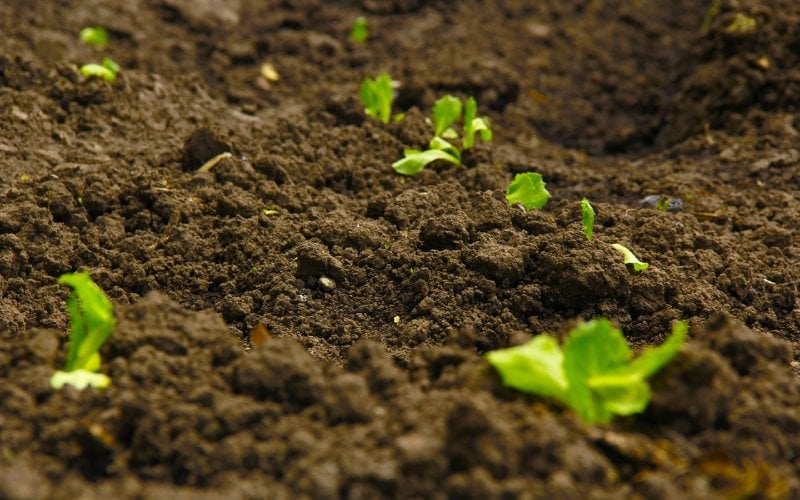
Plants thrive best in soils with a neutral PH, but many prefer acidic soils with a PH of 5.5. If your soil has a slightly acidic pH lower than 7, you may have excellent soil for growing an abundance of plants.
In this article, we will discuss a few of the plants that can be grown and enjoyed in acidic soil, including fruits and vegetables, flowers, shrubs, and even trees. If your soil is alkaline, you can still enjoy these acid-loving plants by treating the soil to lower the pH.
The 20 Types of Plants That Like Acidic Soil
Fruits and Vegetables
1. Sweet Potatoes
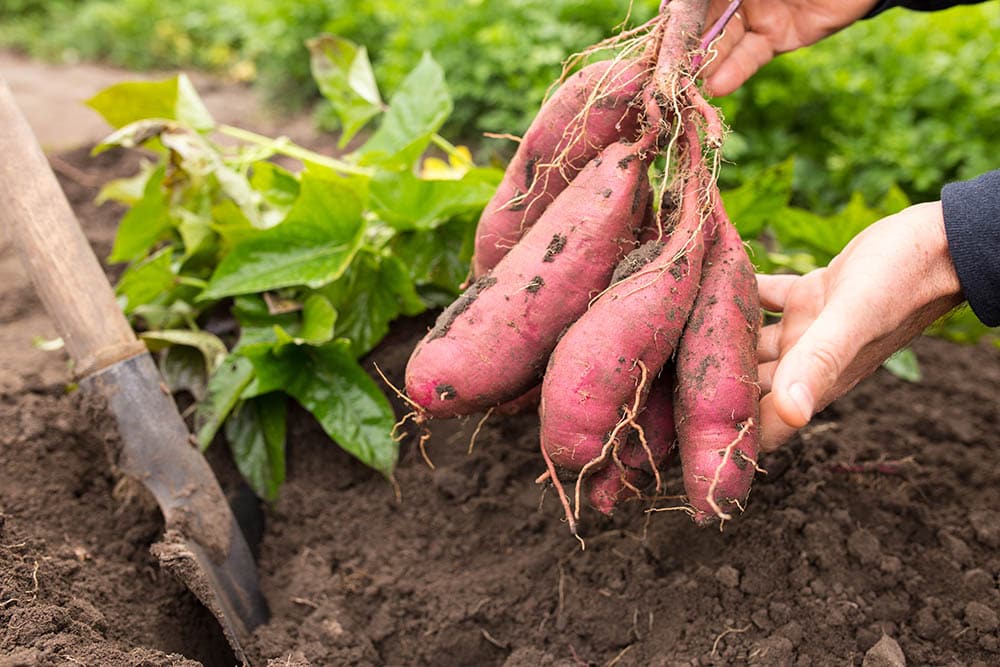
| USDA Hardiness Region: | 5–11 |
| Sun: | Full sun |
| Placement: | Loose, well-draining soil, protect from frost |
Sweet potatoes are an excellent and delicious vegetable to grow in your garden, particularly if you want to grow food in acidic soil. Sweet potatoes thrive in soil that is moderately to slightly acidic in pH, ranging from 5.6 to 6.5. They are low maintenance and heat-loving, so they will need to be planted in at least 6–8 hours of full sun. Because these plants are tropical, they should be planted after the soil has warmed up completely in the spring. Once your sweet potatoes are established, they will need about 1 inch of water a week to keep them evenly moist and in the final weeks before harvest, stop watering to prevent the mature tubers from splitting.
2. Broccoli
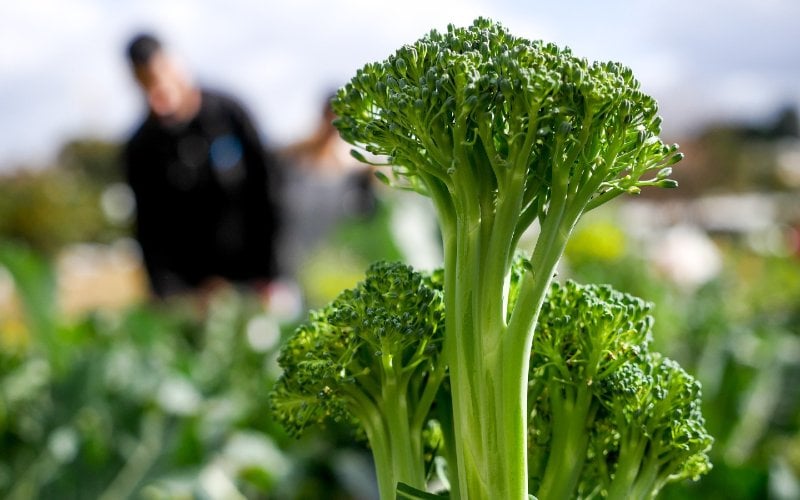
| USDA Hardiness Region: | 2–11 |
| Sun: | Full sun |
| Placement: | Moist, fertile, well-draining soil |
Broccoli is one the most nutritious greens you can add to your garden, and for gardeners with low pH soil, broccoli is a good choice. They are a cool season vegetable, usually planted in spring, that may take some time to mature, but once the main head of the broccoli plant is harvested, it will continue to produce smaller side shoots that can be enjoyed for the next few months. To enjoy big broccoli florets, you will need to plant them in full sun in an area that receives at least 6–8 hours a day. Otherwise, your plant will be leggy and thin with average-sized broccoli heads.
3. Cabbage
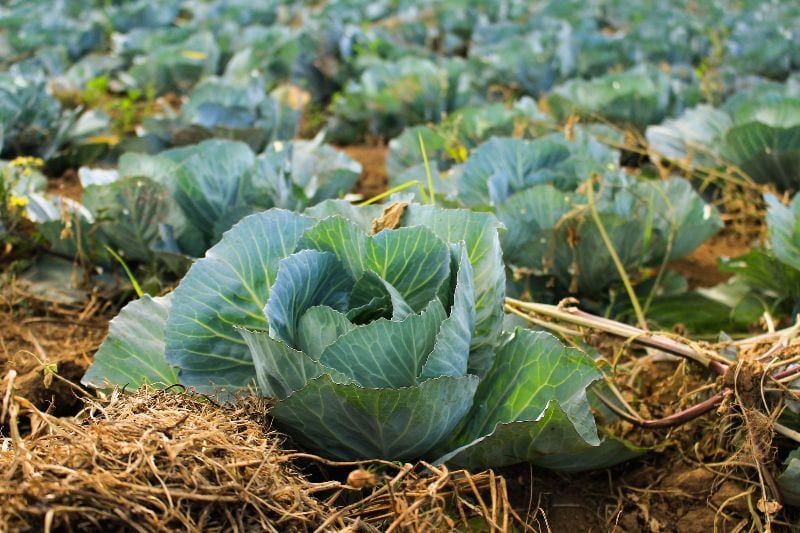
| USDA Hardiness Region: | 3–12 |
| Sun: | Full sun |
| Placement: | Nutrient-rich, well-draining soil |
Cabbage is suited for spring and fall and is a great nutritious food to consider growing in acidic soil. Having said that, cabbage may be a challenge for a beginner gardener. It is a heavy feeder that rapidly depletes soil nutrients and requires a consistent water supply and nutrients throughout its growth. It’s important to remember that cabbage prefers cool temperatures. If cabbage is exposed to excessive heat or cold, it will split or bolt instead of forming a head.
4. Carrots
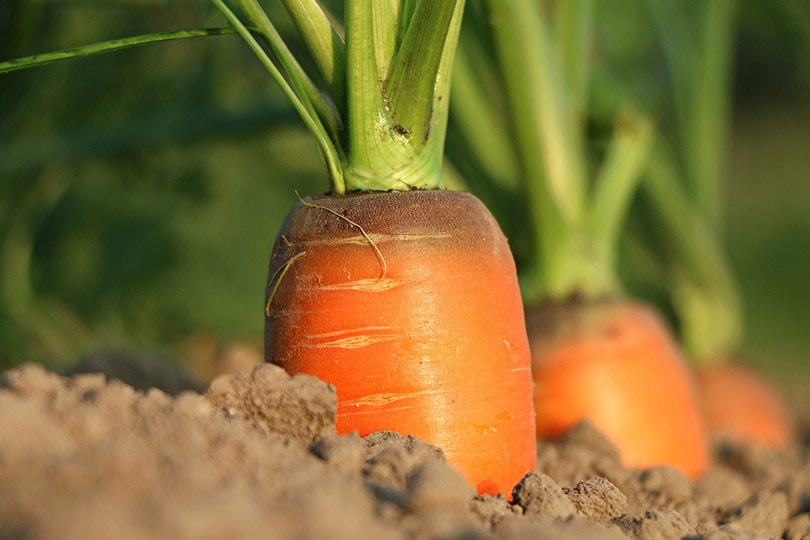
| USDA Hardiness Region: | 3–10 |
| Sun: | Full sun |
| Placement: | Well-draining soil that is not too rich |
Carrots are a low-maintenance, tasty root vegetable to grow in your garden, and they thrive in acidic soil with a PH of 5.5–7. They can be cooked using various methods or enjoyed as an on-the-go snack. Carrots thrive in 6–10 hours of sun a day, and the soil should be well-drained. They are one of the few plants that benefit from sandier soils. Your soil shouldn’t be too rich, as it will prevent your carrots from reaching down.
Harvest your carrots after a few frosts have occurred for a sweeter snack.
5. Cucumbers

| USDA Hardiness Region: | 4–12 |
| Sun: | Full sun |
| Placement: | Fertile soil, well-draining soil |
Cucumbers are an excellent acid-loving vegetable to enjoy in your garden. They are producers, so you don’t need to plant too many, and whether you enjoy cucumbers in a salad or the juicy crunch of a pickle, planting cucumbers is ideal for beginners. What’s also great about cucumbers are the various types that allow you to grow them up a trellis as a vine or bush cucumbers that can be planted in small garden beds or containers. They enjoy the warmth and a lot of light, so plant them in a spot where they receive at least 6–8 hours of full sun daily.
6. Blueberries

| USDA Hardiness Region: | 3–8 |
| Sun: | Full sun |
| Placement: | Well-draining soil, free of weeds and large trees that will shade them |
Blueberries are a universal favorite, and the good news is that if your soil is acidic, you can enjoy harvesting baskets of blueberries to enjoy fresh or baked in a delicious pie. They thrive in soil with a PH of 4.3–5.5 and enjoy the sun but can tolerate small amounts of shade. It’s best to plant them where they are free of weeds and large trees that may cast shade over them, resulting in less fruit production and fewer blossoms. They will also compete for water and nutrients and obstruct airflow.
7. Strawberries

| USDA Hardiness Region: | 5–8 |
| Sun: | Full sun |
| Placement: | Well-draining soil, full sun, but shade during the hottest time of day |
Strawberry picking from your garden is one of the most rewarding activities. Like blueberries, they can be enjoyed straight off the bush, baked into a desert, or made into a sweet jam. They make an excellent addition to any property because they reproduce each year. Strawberries can be grown in various ways, but they must receive at least 8 hours of direct sunlight and be planted in slightly acidic soil with a pH of 5.5 to 6.8. Although they enjoy the full sun, they will require a small amount of shade when the sun is hottest in the day.
8. Raspberries

| USDA Hardiness Region: | 4–8 |
| Sun: | Full sun to partial shade |
| Placement: | Well-draining soil, air circulation, shelter from wind |
Raspberries are great for fruit lovers who enjoy a tart taste, and growing them in your garden will provide many uses, such as jellies, jams, and baked goods. They are a low-maintenance fruit that will return for years to come. They can grow in various soil types, but the best part is that they thrive in soils with a pH of 5.5–6.5. Raspberries grow best in a sunny location but will also grow happily in a partially shaded spot, unlike many fruits. However, the more sun there is, the more fruit you will have to enjoy.
Flowers and Shrubs
9. Viburnum Bushes

| USDA Hardiness Region: | 2–9 |
| Sun: | Full sun |
| Placement: | Fertile, well-draining soil. Can tolerate partial shade. |
Viburnum bushes are attractive shrubs that will make a beautiful addition to any landscape. They have attractive foliage, delicate white flowers, and berries, providing interest all year round. They can be planted for hedging or as a lovely border and cut to make a great showpiece in your home. Most varieties of Viburnum prefer full sun, but they can also tolerate some partial shade and thrive in moist, rich, and slightly acidic soil with a PH of 5.5–6.5.
10. Bottlebrush Shrubs

| USDA Hardiness Region: | 5–8 |
| Sun: | Full sun to partial shade |
| Placement: | Well-draining, moist soil |
The standout bottlebrush shape and texture of these shrubs’ flowers give them their unique name. These perennial shrubs will adorn your landscape with red and crimson blooms, with some varieties producing white or yellow flowers in late spring or summer.
The autumn leaves of your bottlebrush shrubs will be the most colorful if you give them full sun, providing interest to your garden in the fall. Bottlebrush shrubs grow best in humus-rich, well-drained soil with a pH of 5.6–7.5. A few hours of the bright morning sun, some afternoon shade, and a few hours of afternoon sunlight should keep your bottlebrush shrub thriving and happy, as long as they are getting a cumulative amount of 6 hours of sun a day.
11. Holly
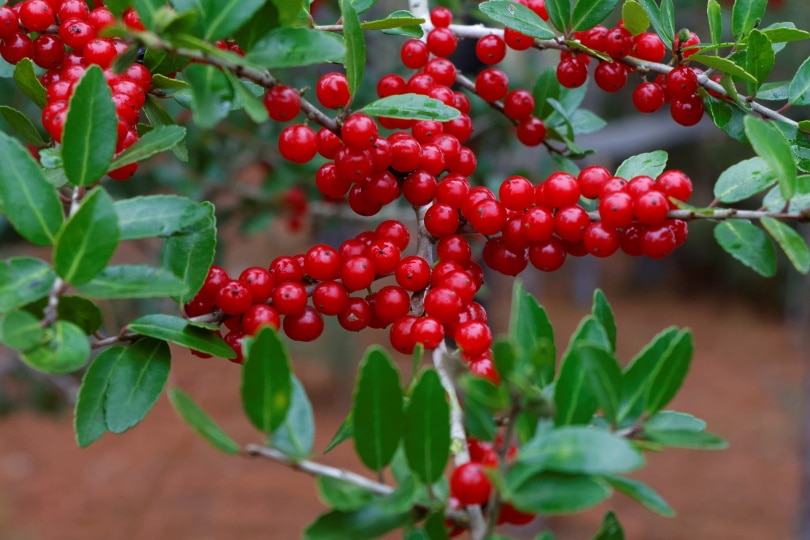
| USDA Hardiness Region: | 5–9 |
| Sun: | Shade to partial sun |
| Placement: | Well-draining soil |
Holly is well known as a Christmas plant, used to adorn Christmas wreaths. Their shiny green foliage and bright red berries make them a striking and interesting plant that can be a festive and attractive addition to your garden. Holly comes in a variety of forms, and the majority of which are shrubs. They thrive in full sun, well-draining, acid soil. However, most hollies are very tolerant of less-than-ideal conditions and will thrive in partial shade, dry soil. If you want to grow Holly for its bright red berries, keep in mind that only females produce them.
12. Rhododendrons
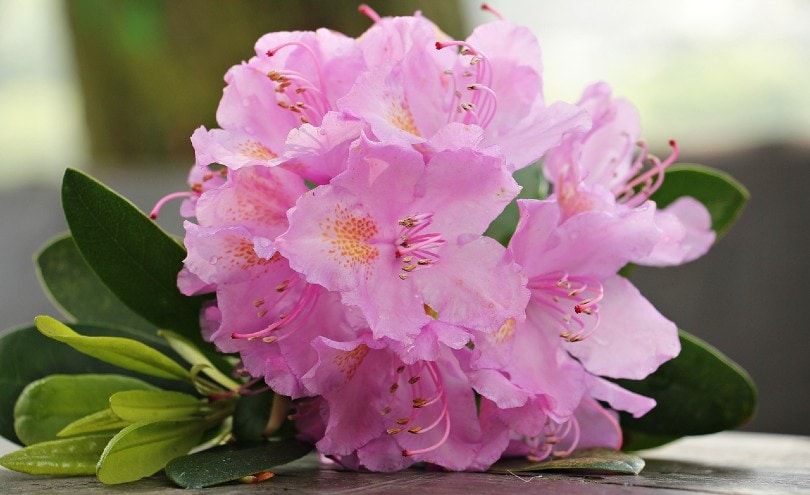
| USDA Hardiness Region: | 5–8 |
| Sun: | Shade to partial sun |
| Placement: | Well-draining soil |
Rhododendrons are acid-loving shrubs that produce bright clusters of flowers that will adorn any landscape in the spring. They are low maintenance and thrive when planted in the correct soil and location. Unlike many other blooming plants, Rhododendron does not like the full morning sun in winter and perform best when planted in dappled shade on the north side of a building. They thrive in soil with a PH of 4.5–6.0 and must be protected from the wind.
13. Gardenias

| USDA Hardiness Region: | 8–11 |
| Sun: | Full sun to partial shade |
| Placement: | Moist and well-draining soil |
Gardenias are loved for their creamy, white blooms and sweet fragrance. They can be pretty temperamental, but with the right conditions, these acid-loving, evergreen shrubs will provide beauty to your garden all year. Plant your gardenias in a location that offers full sun with some partial shade and in moist, well-draining soil with a PH of 5.0–6.0.
Mulch the soil to prevent it from drying out, and be sure not to overwater as the flowers may not bloom or they may fall off. They enjoy humid conditions, so if the air is dry, you can mist them down and cut off faded flowers to encourage new blooms.
14. Hydrangeas
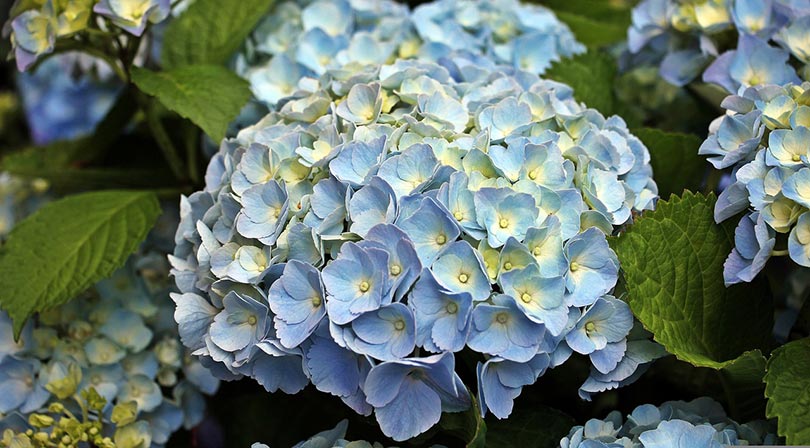
| USDA Hardiness Region: | 3–7 |
| Sun: | Partial sun |
| Placement: | Fertile, well-draining soil. Shelter from wind |
Hydrangeas are a beautiful base for a garden bed that produces pink, purple, white, and blue flowers. The soil in which your hydrangeas are planted determines the color of the blooms, and if you’re looking for blue flowers, then acidic soil is perfect. Look for a variety that blooms in blue such as Nikko Blue, Penny Mac, and Blauer Prinz.
Hydrangeas must be grown in acidic soil with a pH of 5.5 or lower to produce true blue flowers. Spring is the best time to plant most garden plants, but hydrangeas can be grown in pots all year. Plant them where they will get the morning sun and be shaded during the hottest part of the day. You must also protect them from wind and choose a location where they can remain moist, as they do not tolerate dry conditions.
15. Marigolds
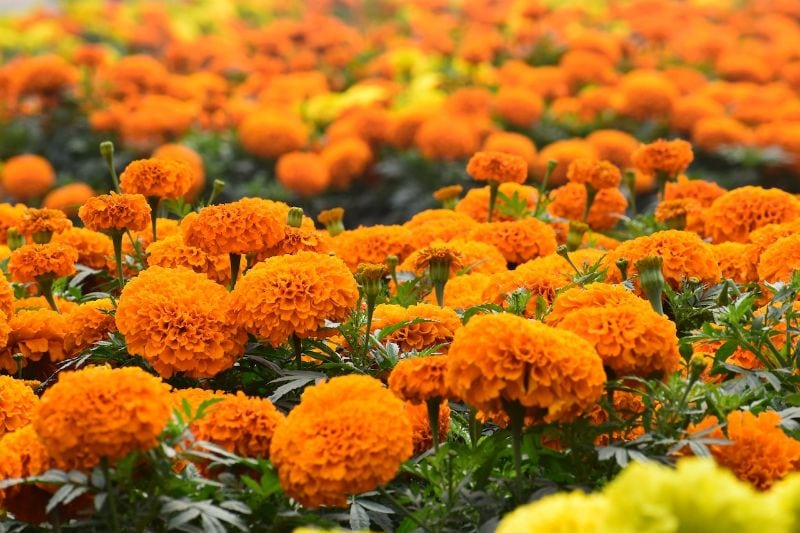
| USDA Hardiness Region: | 2–11 |
| Sun: | Full sun |
| Placement: | Fertile, free-draining soil |
Marigolds belong in all gardens! They provide bright and beautiful spots of color and are great companion plants to fruits, vegetables, and other flowers. Marigolds thrive in any garden soil that drains well. Plant them in pots or containers in a full-sun location protected from heavy rain and wind. If your garden needs some brightening up and pest control, and your soil is acidic, Marigolds are your number one go-to.
Trees
16. Magnolias

| USDA Hardiness Region: | 7–10 |
| Sun: | Full sun to light shade |
| Placement: | Well-draining soil, not crowded. |
The majestic Magnolia is an attractive tree that provides your landscape with structural beauty and an intoxicating fragrance. All magnolias will thrive in acidic soil, and there is a magnolia suitable for almost every terrain, with sizes ranging from shrubs to dwarf trees to trees up to 100 feet tall.
Plant your Magnolia in a location with full sun, well-draining acidic soil, and in an area where it is not crowded. Mulch your soil and water young trees frequently until they are established. They are resistant to diseases and pests, require only basic care, and are exceptionally carefree when established in the proper location and climate.
17. Colorado Blue Spruce
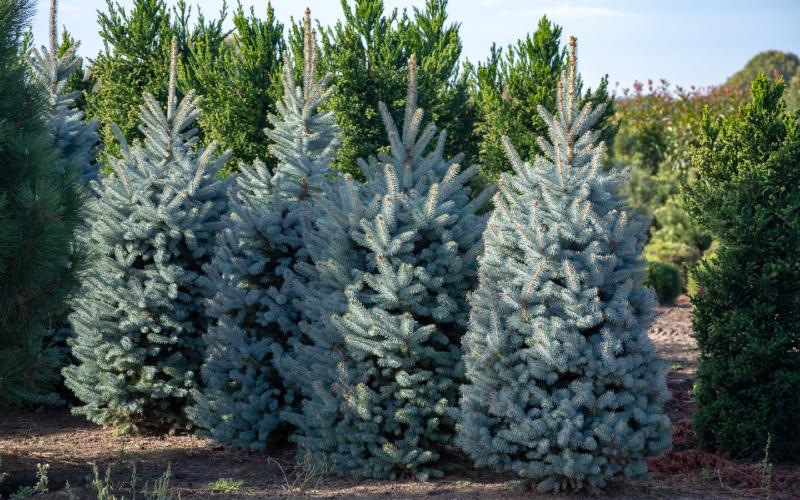
| USDA Hardiness Region: | 3–7 |
| Sun: | Full sun to partial shade |
| Placement: | Moist, well-draining soil |
The Colorado blue spruce is a coniferous evergreen tree that is the state tree of Colorado and is best known for its use as a Christmas tree. Plant Colorado blue spruce trees in full sun, ensuring they receive at least 6 hours of unfiltered sun daily. It grows best in moist, well-drained soil, but its fuss-free nature allows it to tolerate highly acidic or alkaline soils. In mild climates, you can plant spruce all year, but if you live in an area with brutal winters and frosts, it’s best to plant this tree in late winter or early spring when it’s dormant.
18. Pin Oak
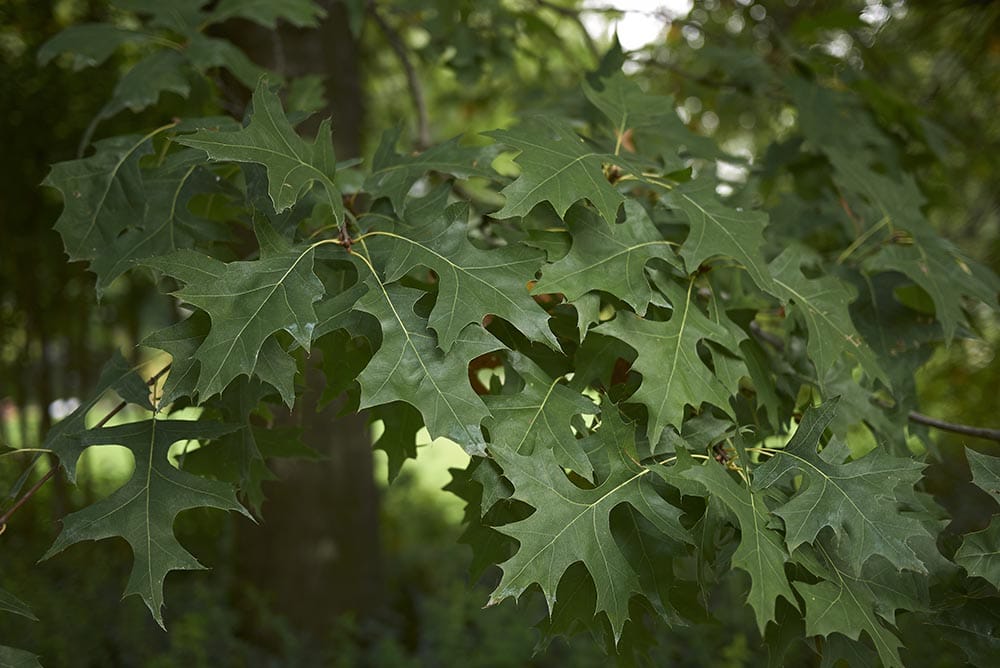
| USDA Hardiness Region: | 4–8 |
| Sun: | Full sun |
| Placement: | Moist well-draining soil. Can tolerate wet conditions |
Pin Oaks are acid-loving, fast-growing, shade-bearing trees tolerant of wet soils. They provide interest all year round with their dark, glossy green leaves in the summer and excellent fall color, with leaves turning scarlet and bronze. They are tall, graceful, and easy to grow, thriving in acid soil with a PH below 6.8. You can plant a pin oak anywhere on your property as the potential for root damage is low, and because their roots are shallow, they transplant easily. Pin Oaks are usually propagated from seeds that can be planted straight into your soil or a container.
19. Dogwood

| USDA Hardiness Region: | 5–9 |
| Sun: | Partial shade |
| Placement: | Evenly moist, well-draining soil |
Dogwood trees are charming and beautiful trees that come in a wide range of colors, shapes, and sizes. Many species bear edible fruit that can be made into preserves, and you can leave some on the tree in winter for wildlife to enjoy.
Plant your Dogwood in a partially sunny location with afternoon dappled shade. It will need well-drained, moist but not soggy soil; although they can adapt to a wide range of soil conditions, they prefer slightly acidic loamy soil. Your tree should be kept moist, though it can withstand brief dry spells once established.
20. Beech
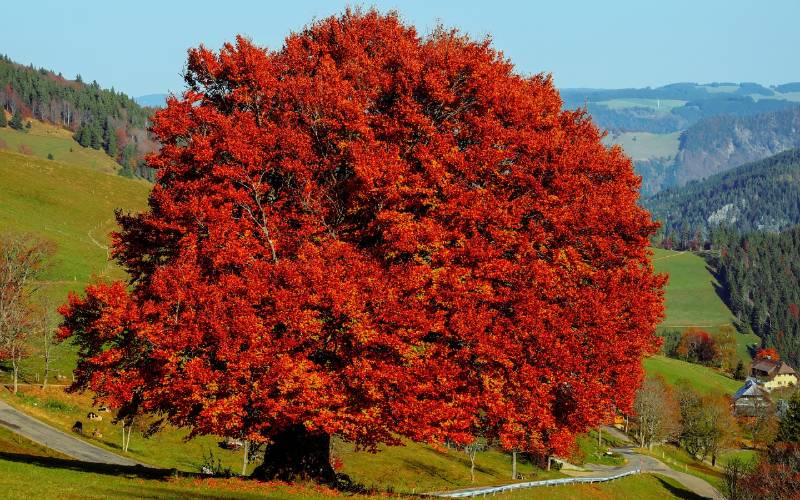
| USDA Hardiness Region: | 3–9 |
| Sun: | Full sun to partial shade |
| Placement: | Moist, well-draining soil |
Beechwoods are typically grown for their colorful leaves and attractive bark, but many people enjoy growing them because of the beechnuts that attract wildlife to their gardens. Beech trees can grow in full sun to partial shade and prefer moist, well-draining, slightly acidic soil. Before planting, ensure your tree has enough space to grow. They require a vast area to accommodate their enormous growth.
Conclusion
If your landscape is made of acidic soil, there is still an abundance of plants that can thrive and beautify your garden beds. As long as you provide your plants with the right growing conditions, they should thrive and grow with little maintenance. If your soil is not acidic enough, you can treat it with additives that lower the pH.
Featured Image Credit: Jumpstory
Contents



